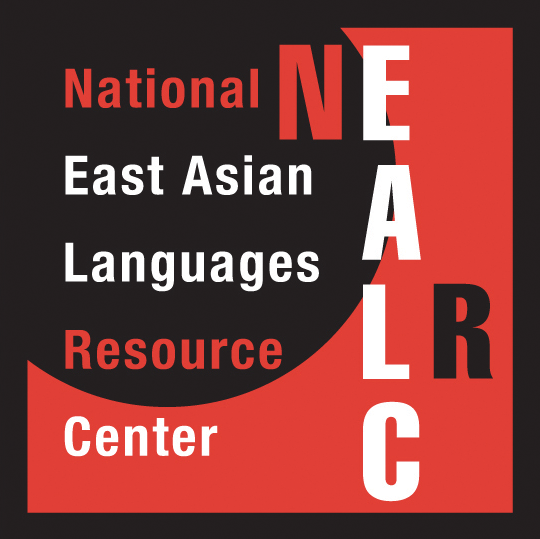
We are now ready to take up the situations of the other newcomers to Japan. How do newcomers with different entry points—a university student, an assistant English teacher (ALT), a company employee, a spouse like Devita, a visiting professor, and a company representative—adapt to their entry points? In Part 4 we will show how the Hazard-Door path developed in 11.1 is highly relevant to all of the other newcomers, and how this trajectory can be adapted as a pathway to adulthood for each of the six other newcomers—and you as well.
This doesn’t mean you can breathe easy and expect to find yourself exactly in Molly’s situation. You will face differences depending on what kind of organization—and uchi context—that you have entered. Forging relationships in a large company or a middle school will differ from Molly’s situation within a host family. There is also the “effort factor”. You could see in Part 3 that not all the guests negotiated their pathways successfully to reach uchi; some proceeded farther than others. Some of this was undoubtedly due to the fit between guest and hosts, and their personal sensitivities and abilities to navigate the hazard steps. Yet there are also other challenges faced by each newcomer in the entry situation. These are social, rather than personal, and they affect how a newcomer is viewed vis-à-vis adulthood by those around her.
In this module we will explore a set of challenge factors that are inherent in each of the newcomer situations. Who has potential for uchi status and who doesn’t? And how much does this matter? In your movement to cultural adulthood, how much is up to your efforts (and those of your hosts)? Is it possible to overcome the challenge factors by your own efforts?
(1) How does the uchi context of each newcomer above affect his/her pathway to cultural adulthood?
(2) What challenge factors affect your pathway to adulthood/uchi?
Revised Table 1: Challenge Factors for All Newcomers
| Challenge Factors | Value | |
|---|---|---|
| 1. | Expertise/Maturity*: | |
| expert, mature (50+) |  | |
| semi-expert, middle age (late 30s-late 40s) |  | |
| non-expert, young (20s-early 30s) |  | |
| 2. | Duration of stay in organization: | |
| permanent |  | |
| 1-3 years |  | |
| one day—>one year |  | |
| 3. | Uchi membership: | |
| uchi member position |  | |
| non-uchi member position |  |
*Although 1. combines two values: age and expertise; in practice these cluster together in Japanese organizations, so that experts are experienced elders, and young people are not regarded as experts.
(3) What are the challenges of your position?
Find out your challenge factors by clicking on the screen beneath the name of your character. Then take a look at all the others.
Find out your challenge factors by clicking on the screen beneath the name of your character. Then take a look at all the others.
(4) How will these challenge factors affect your path for growing up?
Activity #1: Select the newcomer who is closest to your own situation. Predict your newcomer’s potential for reaching uchi by placing his/her icon either inside or outside the uchi circle below. Then do the same for all the other icons.
Activity #2: Now find out how accurate your predictions were. Place each icon onto the entry point below and see where each newcomer ended up.
How did your predictions work out? If the figures in Activity#2 ended up in different places than you predicted, then read on below.
(5)Hey… What’s going on Here? The Challenge Factors tell us that only 2 newcomers have actual membership positions in uchi: the spouse, and foreign company executive. All others have non-uchi positions. But if so, how is it that the ALT, the company employee, the student, and even the homestay guest also reached uchi in the exercise above? And why is it that the foreign company executive, who is suppossed to be an uchi member, didn’t reach uchi but remained at the entry point? These questions will be addressed below.
- The ALT (assigned to a base school for 1-5 yrs.) and co employee (with a 3-year contract) are both non-permanent (and thus non-uchi) members. Both will be in the organization too long to be treated as guests; and both are young (meaning they don’t receive much wrapping and can be expected to adapt to the “ways” of their organizations). As their cases will show, both are expected to conform to uchi, even though they don’t have membership positions. Thus for the ALT and company employee we can say that the uchi boundaries are blurred; they are “inside” in some respects but “outside” in others. This is an important point, which will be elaborated further in their case modules and in 13.1.
- Some of the homestay guests (for example, Molly, Stuart, and Janine) managed to achieve uchi because of the natural tendency of host families to want to minimize “wrapping” them after awhile. This, combined with the desire expressed by Peter’s homestay family, that their guest would participate in the family and “catch onto their ways of doing things”, creates a “pull” of the guest into the family. Thus the uchi boundaries are also blurred for the homestay guests (who have even less uchi status than the ALT and contract employee above).
- The one-year international student who joins a dorm is actually entering a living situation set up for students in four-year degree programs (whether Japanese or foreigners). Although there may be no “rule” against short-term international students reaching uchi membership, the time is so short for them to “grow” to adulthood that expectations are undoubtedly low. But even so, beating this entry challenge is not impossible, and if so, this uchi boundary can blur as well.
- The foreign company executive has been sent by her U.S. home office to run the Tokyo branch office. She is an older management expert of high status, and so is considered an uchi member by the Tokyo company. Yet as a newcomer to the Tokyo branch office (and to Japan) she’s also a cultural child. Ms. Elainius needs to reconcile these conflicting challenge factors—and quickly—if she is to succeed in her position.
(6) Learning from these questions: Five out of the seven newcomers ended up reaching adulthood, even though their challenge factors placed them outside of uchi. One of the newcomers with an uchi position did not reach adulthood. Only two of the newcomers (Devita and Professor Witherspoon) actually ended up completing the trajectory suggested by their challenge factors. How can we explain these discrepancies? What are their implications?
The discrepancies above show that the distinction between uchi membership and non-membership is not simply black and white. Instead, this distinction can become blurred. This means that even if you don’t formally hold an uchi position, if you manage to act like a cultural adult, then you will be treated like a cultural adult—and an uchi member. However, the converse is also true. Even if you do have an uchi position, but are actually a cultural child, you still need to grow up—and fast—because you will not be treated as an uchi member if you remain a cultural child.
The blurred uchi position is incorporated into the revised Table 1 below.
Table 1: Challenge Factors for All Newcomers
| Challenge Factors | Value | |
|---|---|---|
| 1. | Expertise/Maturity*: | |
| expert, mature (50+) |  | |
| semi-expert, middle age (late 30s-late 40s) |  | |
| non-expert, young (20s-early 30s) |  | |
| 2. | Duration of stay in organization: | |
| permanent |  | |
| 1-3 years |  | |
| one day—>one year |  | |
| 3. | Uchi membership: | |
| uchi member position |  | |
| blurred uchi member position |  | |
| non-uchi member position |  |
Now click on each of the characters below to find out who is a blurred uchi member.
It is crucial to understand your own challenge factors, in Table 1, as a newcomer to Japan. But it is even more crucial to grasp that your entry situation is also malleable; that a lot depends upon you; and that it is possible to overcome your challenge factors if you are adept at navigating the steps to adulthood. Moreover, even if you don’t manage all the steps, you can still have a rewarding and successful stay in Japan, as the homestay cases showed. However, if you enter in an uchi position, the ante is raised for you to meet your challenge factors. If you don’t progress to adulthood you will create difficulties both for yourself and for those around you in uchi.
Now it’s time for you to start navigating the other newcomer pathways yourself. At the start you should realize that the challenge factors exist for everyone, and that reaching uchi is not an automatic slide for anyone (Japanese included). The outcome is up to you, in a real sense. Let’s see how well you can navigate the next newcomer pathway to adulthood.














